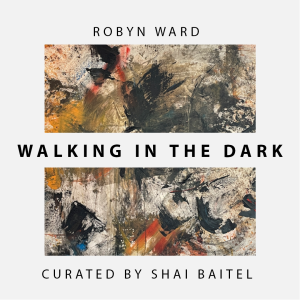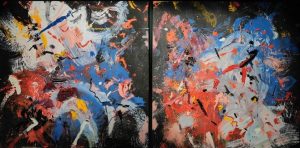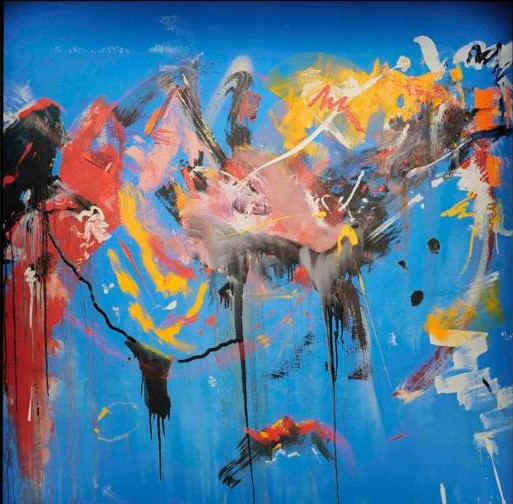 Acclaimed Irish artist Robyn Ward has opened his first solo exhibition in the US with the launch of Walking in the Dark at 82 Gansevoort Street in New York. Curated by Shai Baitel, artistic director of MAM Shanghai, the immersive experience opened on May 15 and features 22 large painted canvases and six freestanding sculptures based on the themes of migration and trauma, both national and personal.
Acclaimed Irish artist Robyn Ward has opened his first solo exhibition in the US with the launch of Walking in the Dark at 82 Gansevoort Street in New York. Curated by Shai Baitel, artistic director of MAM Shanghai, the immersive experience opened on May 15 and features 22 large painted canvases and six freestanding sculptures based on the themes of migration and trauma, both national and personal.
Though known for his figurative work, Ward explores these themes through abstract compositions and mixed media sculptures which speak to his nomadic lifestyle driven by a need for both escapism and its darker counterpart, avoidance.
Born in Dublin and raised in Belfast during the tail end of the Irish troubles, Robyn Ward started painting from an early age, and was expelled from school due to painting graffiti on the school roof. He has worked consistently on his art ever since, and spends his time between New York, Los Angeles and Mexico City. 
His work asks questions such as ‘Why do people roam?’ ‘What is the aftermath of perpetual movement?’ and his works often display a nomadic sensibility which explores the deeper reasons for such roaming.
There is an abundance of hidden psychological, political, and emotional meaning to be discovered in Walking in the Dark, exemplified by the labyrinthine and shaded design of the space where the artworks are being shown.
Like the act of walking in the dark, viewing Ward’s work requires one’s eyes to adjust to see what would otherwise not be detected. Using wet, loose brush strokes with distinctive markings on the oversized canvases, he tells his story through a nostalgic veil of innocence and naivety, revealing snapshots of the past while simultaneously obscuring or hiding others, with each layer depicting different fragments of time that are screenshots of the artist’s life.
 It narrates a story that is both timely and provocative, reflecting the artist’s personal experience with chaos, governance, and violence, while commenting on the breakdown of society and referencing to both historical and modern-day global disputes. While engaging with themes of destruction and conflict, Ward’s work addresses his own life, defined by a perpetual sense of movement and a constant feeling of geographical restlessness.
It narrates a story that is both timely and provocative, reflecting the artist’s personal experience with chaos, governance, and violence, while commenting on the breakdown of society and referencing to both historical and modern-day global disputes. While engaging with themes of destruction and conflict, Ward’s work addresses his own life, defined by a perpetual sense of movement and a constant feeling of geographical restlessness.


